Top Photo: Brown thrasher belts out his best imitation of other local birds and sounds.
Like mockingbirds, thrashers (above) mimic other birds and sounds that occur in their immediate area. While mockingbirds often repeat the same phrase over and over again, thrashers tend to repeat each mimicked phrase or sound twice, then move on to the next one.
Physical mimicry is fairly common in invertebrates. Whether to avoid being eaten by predators or as a predator seeking to hunt other insects. Ant mimicry is relatively common, and spiders seem to be the most common myrmecomorphs.
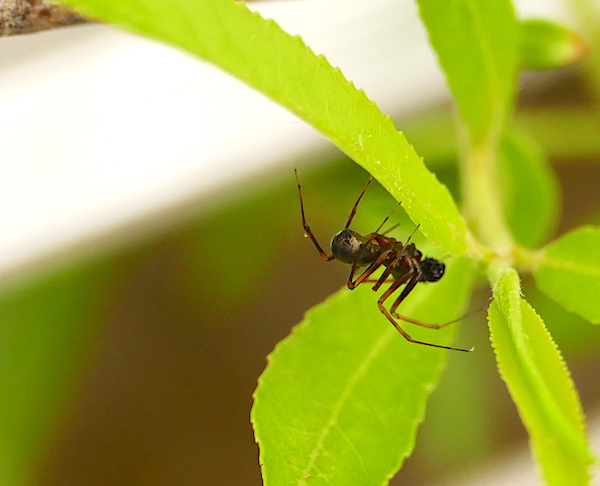
The spider pictured here was seen on a willow branch over-hanging the floating walkway in the wetlands. I’m not sure of the species to which it belongs. If anyone out there has a more specific ID please let me know.
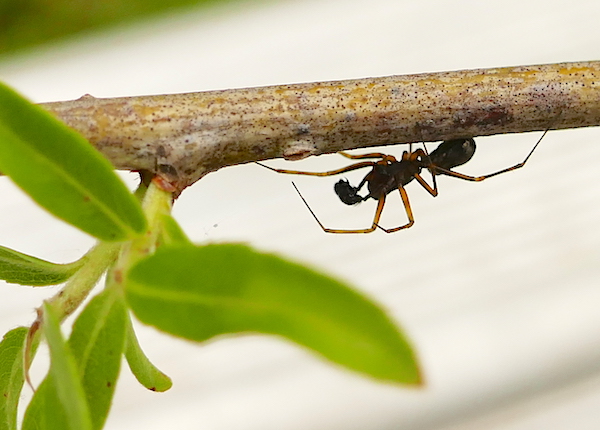
Overwintering as adult butterflies, anglewings often appear quite ragged by the time spring comes along. The comma below is no exception. Its tattered wings won’t carry this lepidopteran much further.
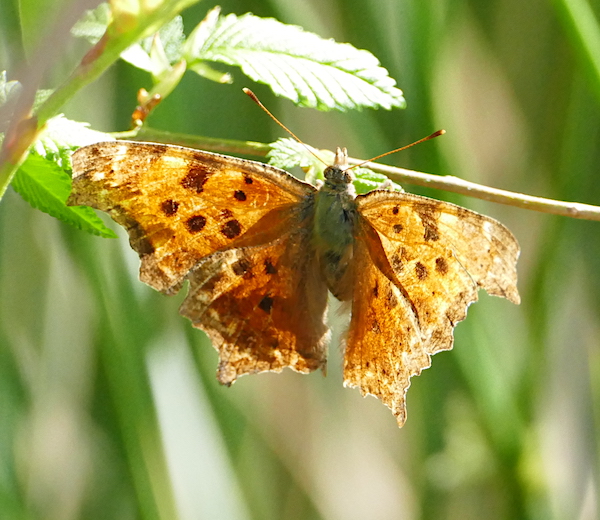
Below is a very fresh (newly emerged from chrysalis) relative of the comma, the question mark. They too, overwinter as adults.

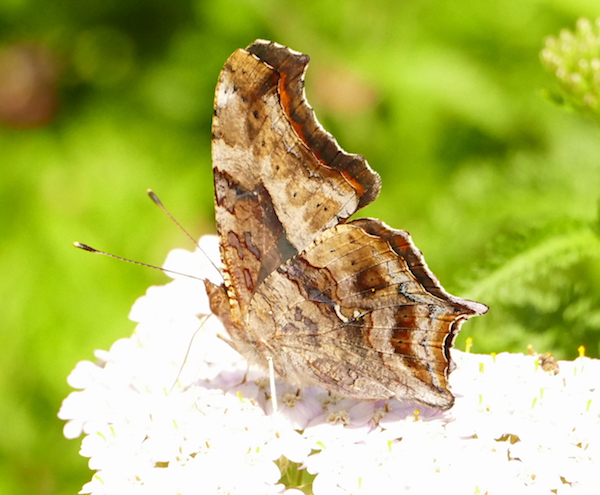
Eastern tailed-blue butterflies are tiny, ground hugging butterflies. They’re gray with black markings on the undersides of their wings and blue on the uppersides. But note the orange spots and small “tails” on each of the hindwings (this individual’s “tails” are worn and shortened).
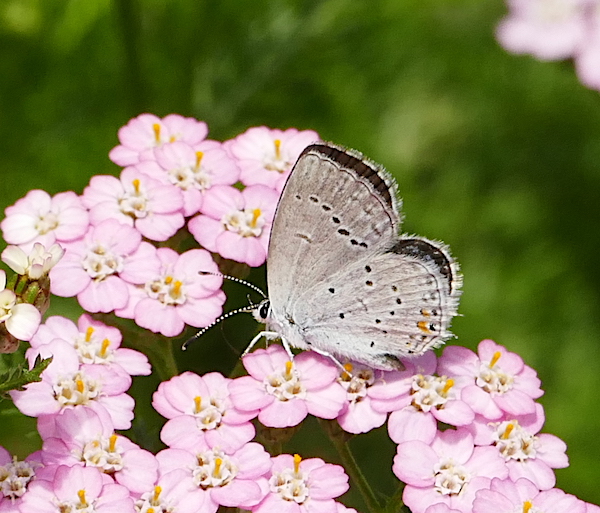
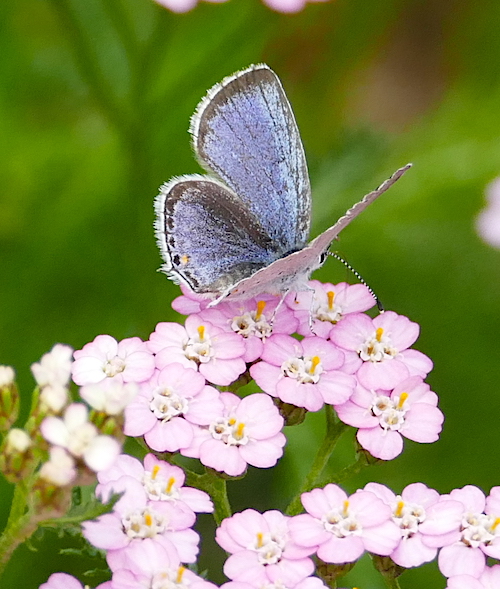
If you see a small gray butterfly that’s constantly rubbing its hind wings together while sitting atop a flower, its probably an eastern tailed-blue.
Gray treefrogs are common here at the museum, but they’re easily overlooked because of their cryptic coloration and tendency to hide during daylight hours. Though, if you know where to look, you might spy one.
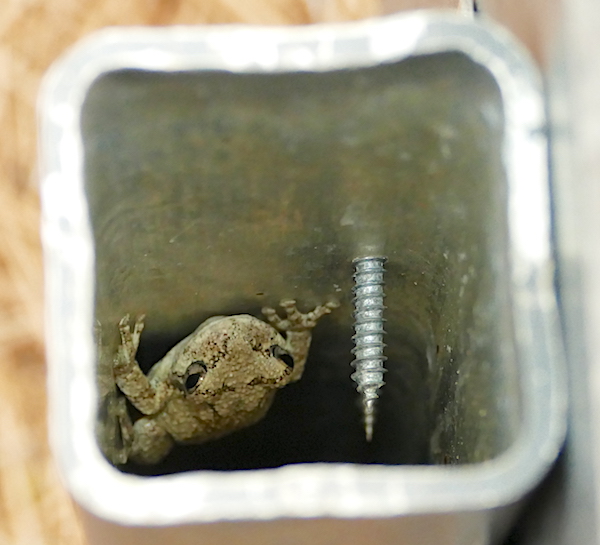

Green treefrogs can be difficult to find also, even though you might think their bright green coloration would give them away.

Green lacewings are nocturnal insects. They’re in the order of insects called Neuroptera (nerve winged). Their larvae feed on other insects and may actually camouflage themselves with the bodies of their prey or other debris in the area, including lichen which has given them the common name, lichen bug.
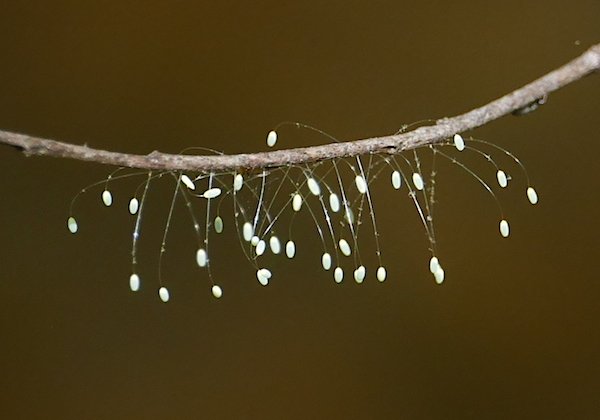
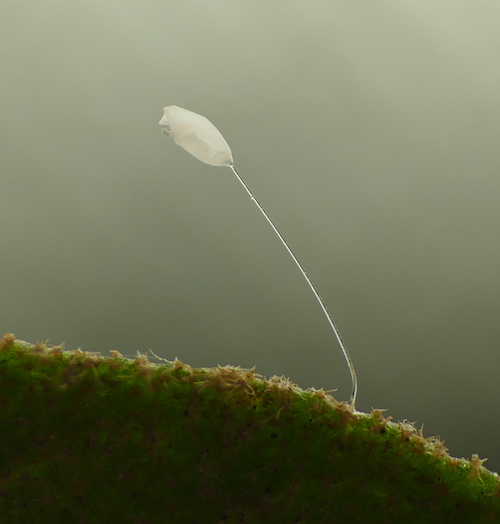
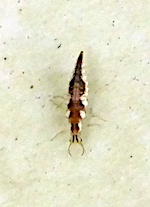
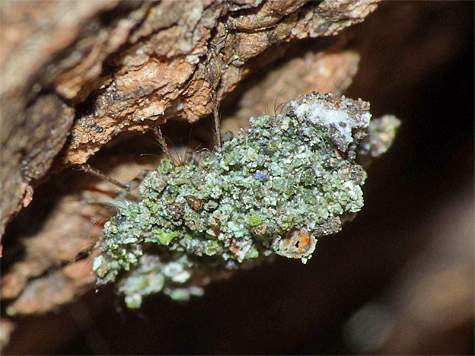
Dutchman’s pipe or pipevine is an attractive plant with pipe-shaped flowers. Pipevine is the host to pipevine swallowtail butterflies who lay their eggs on the plant.

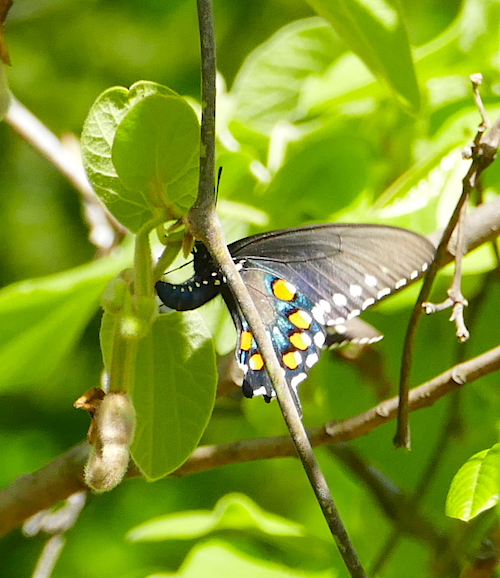
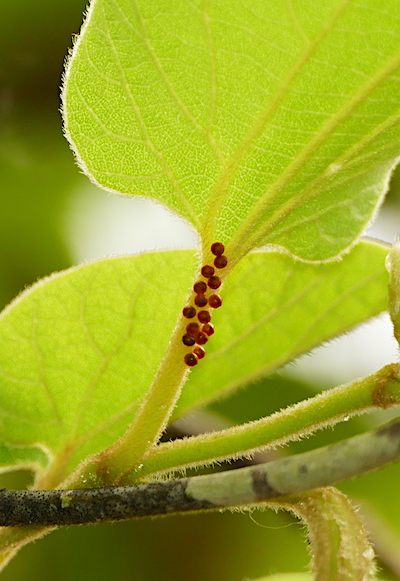
Keep an eye out for fledging birds. Many of our local year-round residents nest early and are finishing up with their first broods.

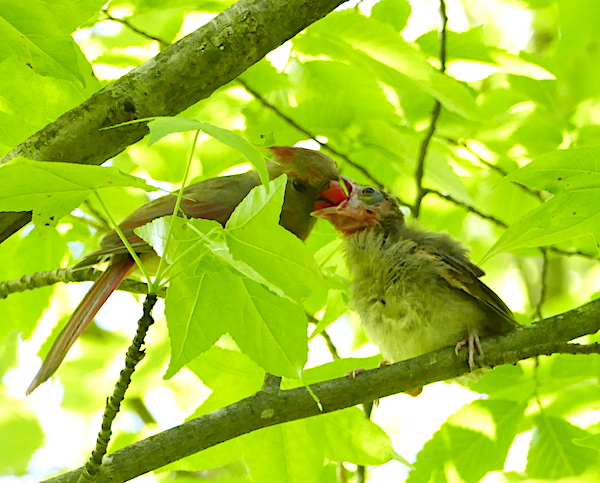
This is only a small sampling of what you might see outdoors at this time of year. But, as always, if you’re not out there, you’re not going to see it.